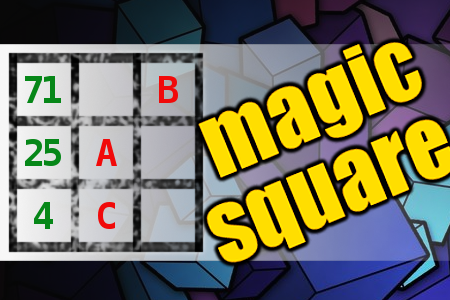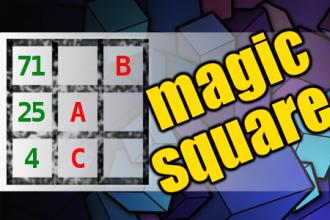MAGIC SQUARE: Calculate A+B+C
The aim is to place the some numbers from the list (3, 4, 8, 10, 20, 21, 25, 71, 72, 76) into the empty squares and squares marked with A, B an C. Sum of each row and column should be equal. All the numbers of the magic square must be different. Find values for A, B, and C. Solution is A+B+C.Correct answers: 14
The first user who solved this task is Nasrin 24 T.
#brainteasers #math #magicsquare


